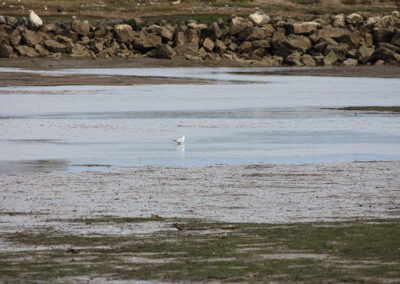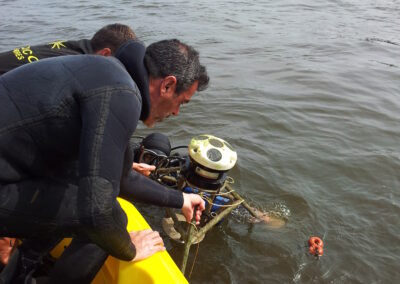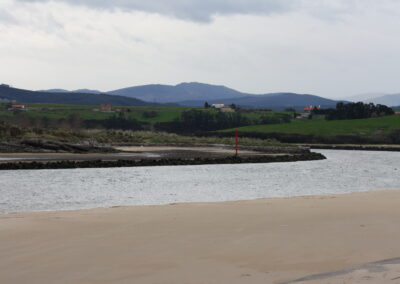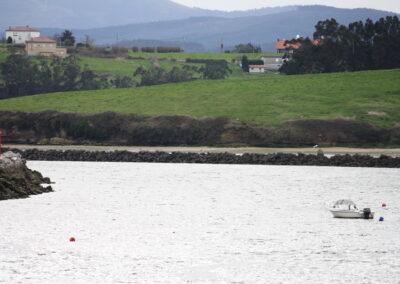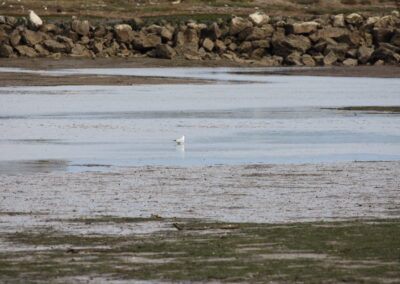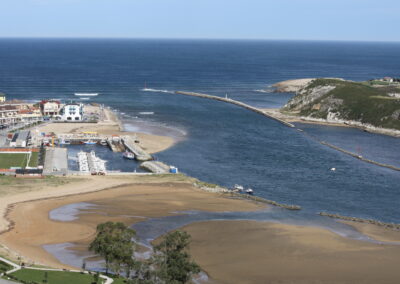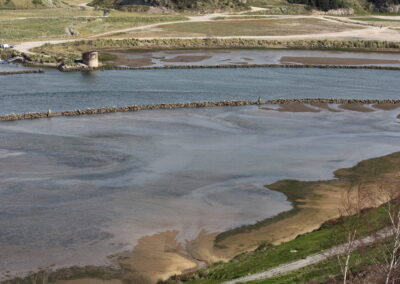NEWS
IHCantabria develops a study on mixing and stratification alterations generated by climate change in estuaries.
The results of this study, recently published in the scientific journal Frontiers in Marine Science, provide the tools to establish a common framework for comparing the effects of climate change on water mixing in estuaries around the world.
In order to study the alterations in the mixing and stratification of the water column in estuaries, both at present and in possible future scenarios due to climate change, researchers from the Institute of Environmental Hydraulics of the University of Cantabria (Instituto de Hidráulica Ambiental de la Universidad de Cantabria (IHCantabria) proposes a new methodology based on high-resolution 3D hydrodynamic modeling to calculate what is called the ‘potential energy anomaly’ -a measure of water column stratification used in estuaries. The results of this work are detailed in an article recently published by the scientific journal Frontiers in Marine Science, whose content is available through this link.
Understanding the impacts of climate change on estuaries is of vital importance, not only because more than 70% of the world’s largest cities are located next to this type of aquatic system, but also because of their importance for planetary and human health. For decades, several studies have focused on analyzing the mixing and stratification processes in estuaries that determine the quality of their waters, their living conditions and their uses. This is because the contribution of freshwater from the river and saltwater from the sea generates stratification in the water column of the estuaries; because the low-density freshwater flows through the surface towards the ocean and the high-density seawater flows towards the river.
The objectives of the study referred to in the article recently published in Frontiers in Marine Science were: (1) to develop a high-resolution 3D modeling of the hydrodynamics of the Suances estuary, with special attention to mixing and stratification processes, during the year 2020; (2) to make future projections in this estuary, considering climatic changes in atmospheric conditions, river conditions and sea conditions; and, finally, (3) to diagnose possible alterations in mixing and stratification processes due to climate change.
This research is part of the doctoral thesis being carried out by Jagoba Lupiola, a student of the University of Cantabria, under the direction of Dr. Javier F. Bárcena and Catedrático Andrés García with the collaboration of Dr. Javier García-Alba; all of them are co-authors of the aforementioned article and members of the Oceanography, Estuaries and Water Quality Group of IHCantabria.
Among the most relevant results of this study, Javier Bárcena highlights the forecast of an increase in air temperature and a decrease in precipitation, which will lead to a reduction in river flows; in addition to an increase in sea level and, to a lesser degree, changes in seawater density, due to the increase in water temperature. “These phenomena will facilitate the entry of seawater into the estuary, i.e., saline intrusion will increase, with the associated stress that this could cause to local ecosystems. In addition, an increase in the intensity of stratification upstream of the estuary is expected, and a decrease downstream,” says Javier Bárcena.
Based on the methodology developed in the aforementioned study, as well as its application to a real case, the aim is to provide the appropriate tools to establish a common framework in which the possible effects generated by climate change on the mixing and stratification of estuarine waters in any part of the world can be compared. Furthermore, according to Javier Bárcena, “the more knowledge we have about how water mixes in estuaries, the more appropriate the environmental and socioeconomic policies and regulations adopted will be, as they will be able to preserve more effectively both the ecosystem services of the estuary and its uses”.



